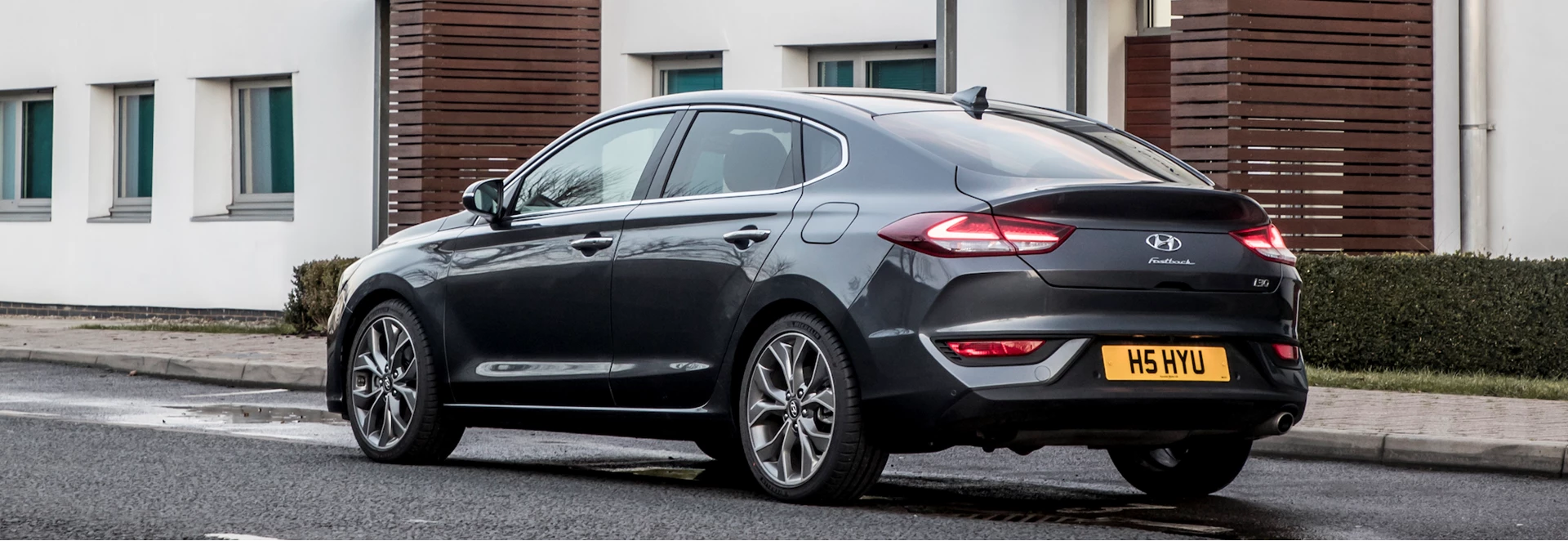Introduction
Fastbacks are essentially hatchbacks crossed with saloons which result in rather quirky-looking coupes.
At a time they were quite popular, but they’ve faded from popularity somewhat, with Mazda being the only company having one on the market with its 3 Fastback.
Now Hyundai has decided to join the somewhat absent party with a Fastback version of its i30 – strengthening the appeal of the popular hatchback, which has already been boosted somewhat with the firm’s i30 N hot hatch.
Despite the changes, it’s still noticeably similar to the standard hatch. The interior and petrol engine choices remain unchanged to the five-door hatch and estate, but there’s clear differences. It receives a lower roof-line and a tapered rear windscreen which is integrated well into a ducktail-style spoiler.
The front also uses a revised front grille, redesigned daytime running lights and altered air intakes. A new front bumper, tinted front lights and exclusive alloy wheel designs to the i30 also complement its look, too.
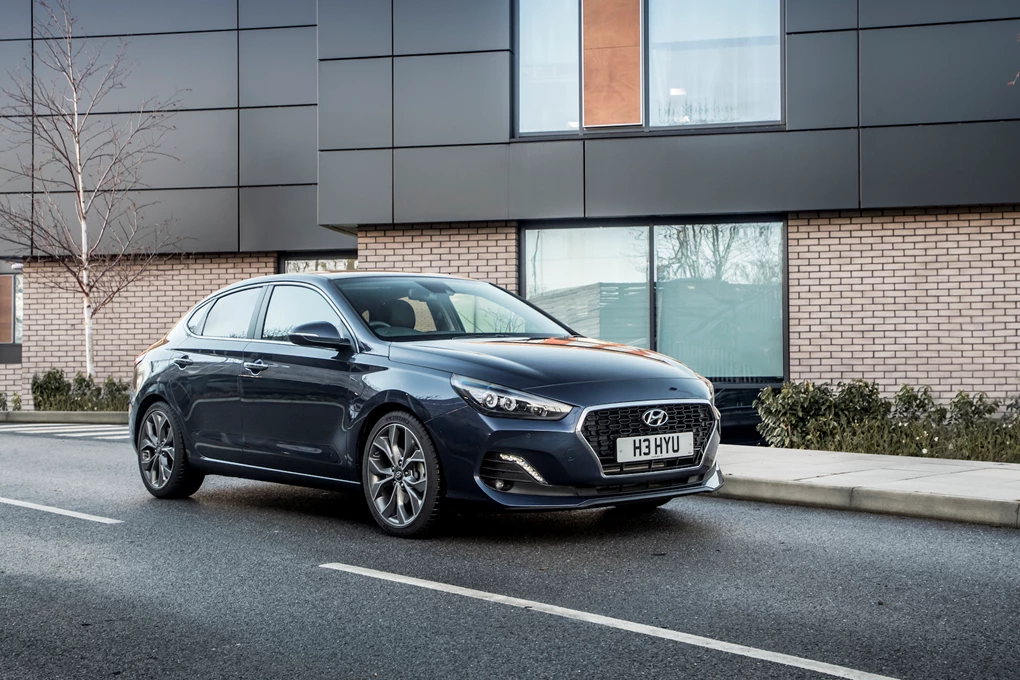
Performance
Unlike the five-door i30 hatch and estate, the Fastback is exclusively offered with petrol engines. There’s the choice of two – a 1.0-litre three-cylinder turbocharged unit and a more powerful 1.4-litre. We got behind the wheel of the 1.0-litre which is widely used across Hyundai and Kia products.
It’s refined and pleasant around town, reaching a top speed of 117mph. The 138bhp 1.4-litre engine delivers stronger performance, and is the only option to have an automatic gearbox.
Enquire Now on a new Hyundai i30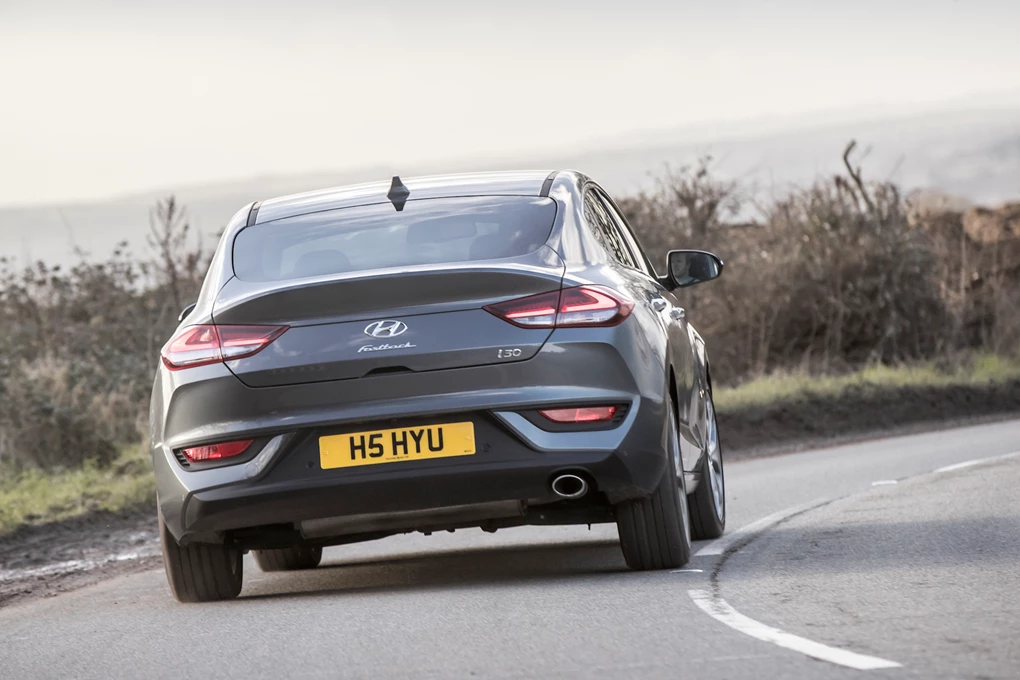
Ride and handling
Hyundai has slightly stiffened up the chassis of the Fastback over the hatch to try and give it a sportier edge. While it by no means brings the car up to hot hatch levels of thrills, it’s noticeable that it performs better than the other variants when the roads get twisty.
Despite the added firmness the ride remains supple and comfortable, and there should be no complaints from neither the driver or passengers, too.
The manual ‘box is also the gearbox to go for if you have the choice, too, as the optional automatic doesn’t tie in quite so well with the i30 Fastback’s character.
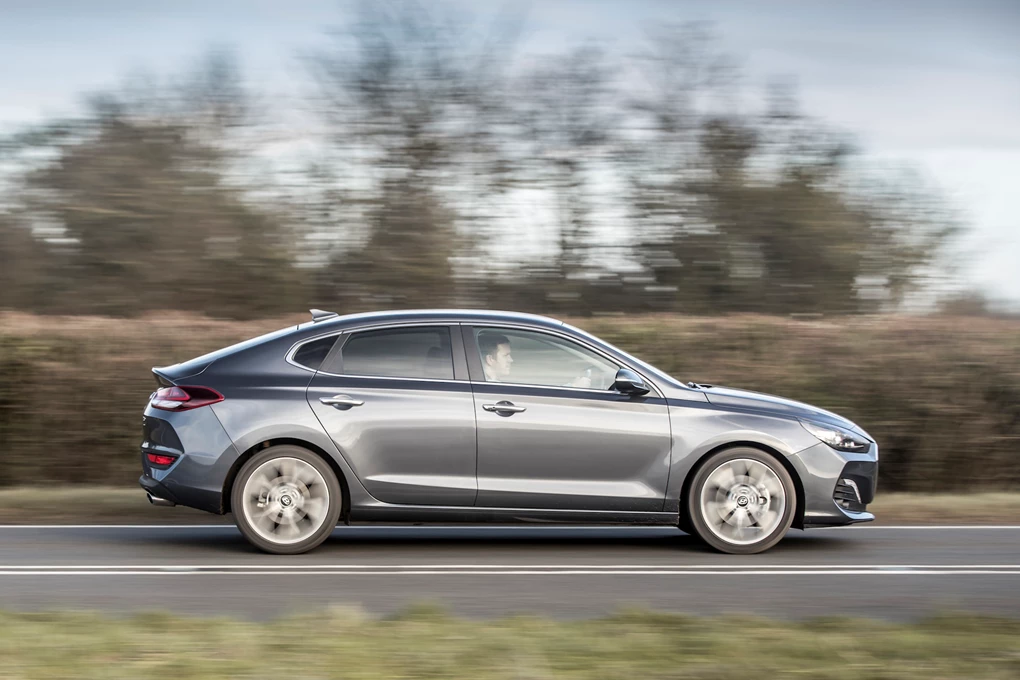
Interior and equipment
All expectations will be met when it comes to the Fastback’s interior. The firm’s other cars have built up a reputation for their largely-good build quality, high levels of standard equipment and middle-of-the-road plastics. It’s hardly the most exciting interior, but its eight-inch interior is easy to use, while everything works well and feels reassuringly solid.
Our main gripe is when it comes to practicality. While the Fastback looks the part, it’s lower roof line has sacrificed practicality – both in terms of rear space and also boot capacity. That’s not to say it’s impractical, but if you require plenty of space, the standard hatch or estate could be the better options to go for.
Standard equipment is generous, though, with entry-level SE Nav cars coming with 17-inch alloy wheels, LED running lights, a rear-view camera and an eight-inch infotainment display with Android Auto and Apple CarPlay and satellite navigation fitted.
Jump up to Premium, and you’ll get dual-zone climate control, heated faux-leather seats and LED front and rear lights. Range-topping Premium SE brings you the luxuries of a panoramic sunroof, real leather and a heated steering wheel.
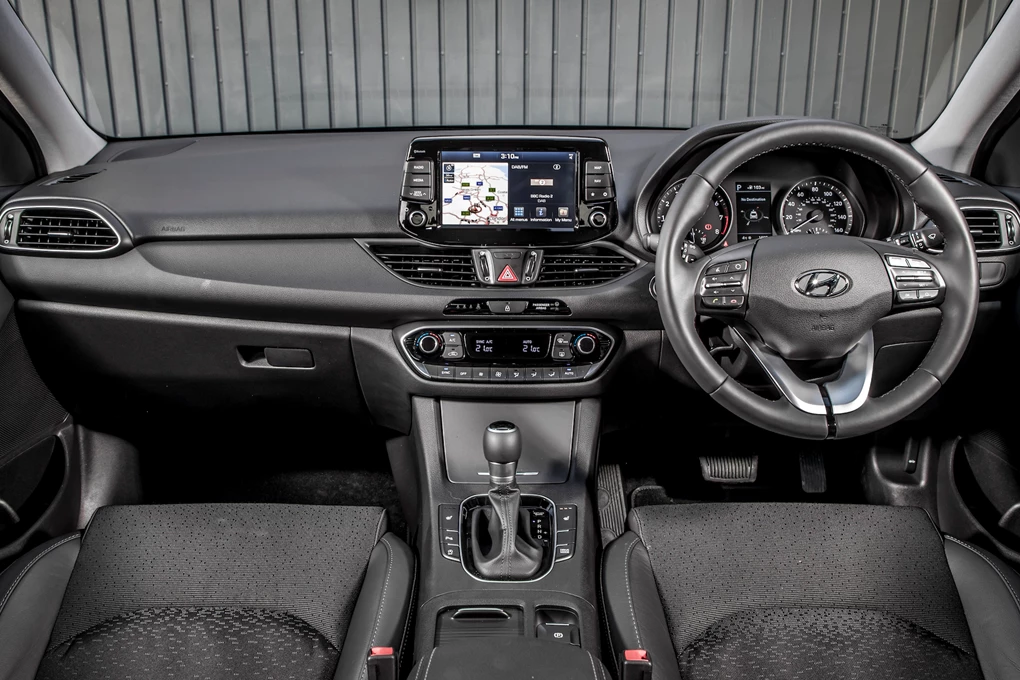
Cost
The i30 is designed to be a more exclusive and premium product than the hatch and estate, and this shows when it comes to pricing.
Prices for the Fastback start from £20,310 – over £3,000 more than the most basic five-door hatch. That said, the Fastback is not offered with low level trim levels and engines in the same way the other models are, which unsurprisingly brings a noticeable increase in price.
The absence of a diesel engine also means you don’t get ultra-low running costs like you do in other hatchbacks, but the 1.0-litre petrol engine can return 47.1mpg on the combined cycle, with CO2 emissions of 124g/km.
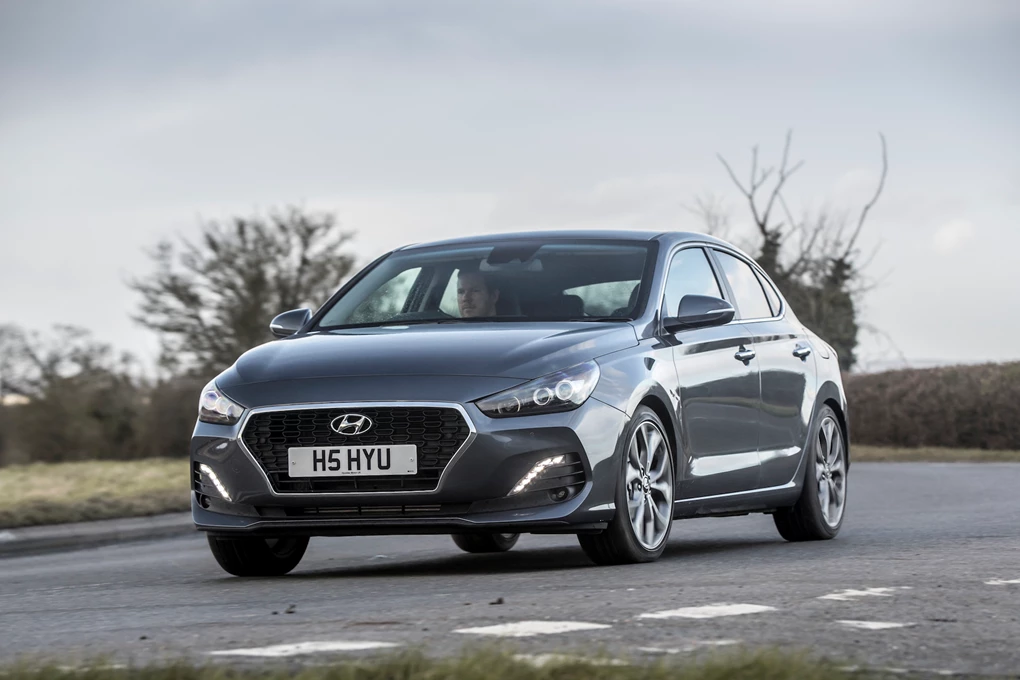
Verdict
It might have been an unexpected move for Hyundai to launch a Fastback version of the i30, after all it will be a slow selling product. But Hyundai knows that.
The Fastback, ignoring the N versions for a minute, will become the exclusive i30 to have, and despite not being as practical as the other variants, by retaining all the other strengths of the i30, and wrapping it up in one genuinely classy and attractive-looking package, it makes a compelling proposition to those who want something a little different from your standard middle-of-the-road hatchback.
Test drive a new Hyundai i30